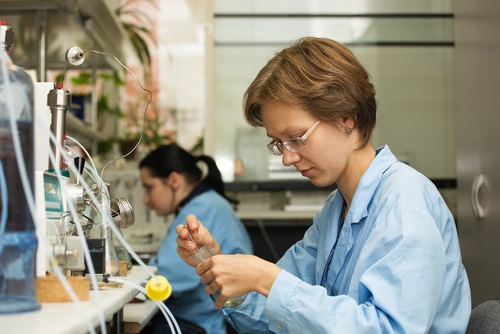<p style="text-align: justify;">Ultraviolet visible spectroscopy, or UV/vis, uses light in the invisible and adjacent ranges of the spectrum to determine different analytes. This can include metals, biologicals, or organic compounds, as a for instance. UV/visible spectrum spectroscopic analysis is routinely used both as a standalone and in conjunction with other methods.</p>
<p style="text-align: justify;">Recently, HPLC has been gaining popularity, especially in the biologies, life sciences, and pharmacological research. As a separation technique, it is highly efficient and highly accurate, as well as particularly useful in situations where the compounds may have little to no absorption or be otherwise unsuitable for spectroscopic analysis.</p>
<p style="text-align: justify;">In simplest terms, HPLC analysis involves several phases. In the <i>mobile phase</i>, a reservoir holds the solvent, while a high pressure pump manages delivery at a specified flow rate. An auto sampling injector introduces a sample to the flowing solvent. This is carried in the HPLC column, where a porous material separates it, in the <i>stationary phase</i>. At this phase, a detector is used to view the separated compound, and the remnants of the <i>mobile </i>phase is collected for waste or studied further. The system produces a chromatogram, or a graphic representation of the chemical separation. It allows precise identification of the compound components. Alternately, depending on the specific nature of the application, electrophoresis, phase extraction, and ion mobility spectrometry have been proposed as methods.</p>
<p style="text-align: justify;"><img class="aligncenter size-full wp-image-10497" alt="Comparing HPLC and UV Visible Spectrum Spectroscopy" src="https://medusamagazine.com/wp-content/uploads/2014/01/HPLC-analysis.jpg" width="500" height="334" /></p>
<p style="text-align: justify;"><strong>UV/vis has a number of advantages which make it an ubiquitous feature in research:</strong></p>
<ul style="text-align: justify;">
<li> It has a quick turn around time compared to some other methods, and it is well understood, meaning that there are standards one can use during testing as a baseline, similar to using calibration techniques.</li>
<li> The established protocols for working with UV/vis systems make for a simple workflow, and more people are familiar with their use. The simple design of UV/vis lies in the one-lamp, which is often modular and can be changed out when a different light source is required.</li>
<li> Waste disposal for UV work tends to be simpler and less costly than some other methods.</li>
<li> UV/vis is non-destructive, meaning a sample can be tested multiple times.</li>
</ul>
<p style="text-align: justify;"><strong>HPLC also has a number of advantages:</strong></p>
<ul style="text-align: justify;">
<li> It has a greater degree of sensitivity, allowing for a precision, sensitivity, and selectivity UV/vis systems simply do not possess.</li>
<li> In dissolutions involving multiple components, HPLC has a greater ability to separate and identify components than other methods.</li>
<li> HPLC stationary columns can be reused a number of times.</li>
<li> Analyses&#8217; results are reproducible with greater ease and facility on an HPLC system.</li>
<li> Unlike UV/vis and some other sample detection methods, HPLC is not particularly difficult to calibrate, and does not require as much TLC to remain fully operational.</li>
<li> HPLC is widely considered the quickest and most effective way to create a “pure” compound for later use in organic synthesis, clinical or toxicological research, or other later use.</li>
</ul>
<p style="text-align: justify;">Fundamentally, there is no official “right” or “wrong” way to go about sample analysis. The equipment chosen may vary from project to project or within a given project. However, HPLC is the most common, showing up in everything; quality control, product comparisons, reverse engineering, pharmaceutical development, biochemical research. The challenge for the technician or researcher becomes selecting the appropriate tool for the job, which requires experience, as well as a detailed understanding of how each method works, and toward what goal.</p>

Comparing HPLC and UV Visible Spectrum Spectroscopy
